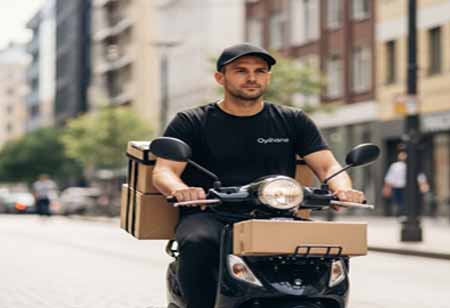THANK YOU FOR SUBSCRIBING
THANK YOU FOR SUBSCRIBING

By
Logistics Transportation Review | Monday, June 30, 2025
Stay ahead of the industry with exclusive feature stories on the top companies, expert insights and the latest news delivered straight to your inbox. Subscribe today.
Fremont, CA: In recent years, last-mile delivery has experienced substantial transformation. As consumer expectations for faster and more precise deliveries continue to rise, Latin American companies are adapting their logistics strategies to enhance the movement of goods from distribution centers to final destinations.
Unlike in previous times, when last-mile delivery was regarded solely as a logistical endpoint, it is now recognized as a vital component of the overall customer experience. This paradigm shift has catalyzed innovation across technology, operations, and service models, focusing on addressing increasing demands efficiently and sustainably.
Speed and Urban Fulfillment as Strategic Priorities
A renewed emphasis on the speed of delivery represents a fundamental shift in supply chain thinking. Many markets expect same-day and next-day delivery options to be available as a general rule rather than as a premium service. Organizations in Latin America are significantly increasing their deployment of small micro-warehouses and urban fulfillment centers to make this possible.
These smaller physical locations help expedite deliveries and reduce the distance between storage and delivery points. This alternative minimizes delivery times and contributes to cost efficiency when examined in conjunction with route optimization technologies. The ability to fulfill orders quickly and accurately in heavily populated areas becomes a key differentiator.
Technology Driving Visibility and Efficiency
The primary force in redefining last-mile delivery is technological integration. Real-time tracking systems provide customers and delivery operators with visibility into the entire delivery process, accompanied by dynamic updates that enable customers to make adjustments when delivery windows need to be altered due to changes in the package's original delivery location. Additionally, the data collected through the platform informs the more resourceful use of delivery scheduling and more accurate demand forecasting.
Emerging technologies, such as autonomous delivery vehicles and drones, are being pilot-tested to address specific challenges related to congestion, workforce availability, and serving remote areas. While these technologies are not typically or widely adopted, they exemplify a persistent impetus toward greater automation and operational agility.
Sustainability Versus Customer-Centric Service Models
Increasingly, sustainability goals are characterizing last-mile strategies. The frequent and often fragmented nature of deliveries has drawn attention to the need for greener solutions. Latin American companies are now seeking alternative fuel vehicles, consolidating delivery routes, and carbon offset programs to reduce emissions associated with last-mile delivery.
One initiative encourages customers to choose longer delivery windows, enabling more efficient route planning and less vehicle use. Electric vehicles are also being gradually adopted in cities and densely populated areas to strike a balance between environmental responsibility and operational performance.
Consumer pull has always driven change in service models. Flexibility, convenience, and reliability are at the top of customer priorities. Some alternatives to these demands include scheduled deliveries, parcel lockers, and stores offering pickup points. These not only improve customer satisfaction but also enhance operational efficiency by consolidating drop-off points. A blend of technology, local infrastructure, and responsive logistics planning is necessary to meet the expectations of a diverse customer base.
I agree We use cookies on this website to enhance your user experience. By clicking any link on this page you are giving your consent for us to set cookies. More info





